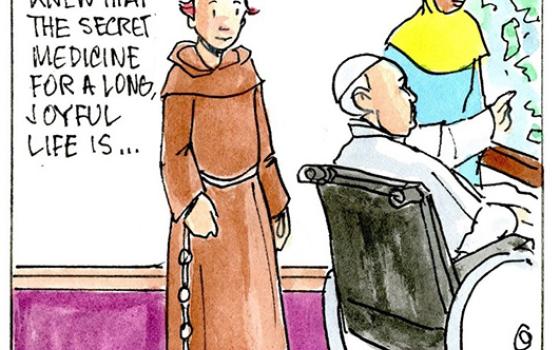
(Unsplash/Lidya Nada)
Because of the Supreme Court, the bruised profile of Labor Day dimmed the hoopla of the Fourth of July for me this year. As holidays go, July 4 is the strutting pride of patriotism, the pyrotechnic symbol of American ideals, while Labor Day closes the festival of summer with scarce notice of its origins in the implicit promises in the founding principle of equality.
The Supreme Court's new assault on organized labor stirred this tragic reminder. Its 5-4 ruling to prevent unions from collecting dues from public service employees who gain benefits from union contracts but aren't union members. The loss of sizeable revenue deals a severe financial blow to the faltering labor movement.
The setback is a reminder that animosity against unions has never gone away. Despite hard-won gains by underclass laborers from the late 1800s through the 1950s, the behemoths of industry and finance have sustained contempt for unionization as a primal threat to their unrestrained use of capital, a shackle on the prerogatives of extremely powerful forces, economic and political, who control the fates of millions of front-line producers of the goods and services that fatten their profits.
The captains of the economy basically root the legitimacy of capital's dominance in a narrow view of the July 4 call for freedom and independence. I believe that war cry against British injustice implicitly applied as well to the range of exploitation within the colonies, including abuse of labor that had yet to be widely recognized. In the meantime, the ruling class's preferred view of fiscal freedom was that the wealthy were entitled to virtually absolute control over investments and worker pay. That rationale has justified imbalances in favor of ownership, with occasional compromises, from the start. I believe that premise deeply informed the Supreme Court's majority decision in the latest case.
That interpretation, derived from founding documents written by well-heeled patriots with a natural, self-serving bent, was only one of many possible ways economic freedom could be framed, but the stature and prestige of the founders carried by far more clout than competing arguments. The moneyed class therefore sustained a system favorable to them and punishing to laborers, including most extremely the misery of slaves. There was room within the Declaration of Independence and U.S. Constitution to build a more egalitarian community of owners and laborers, but that potential easily yielded to the lures of custom, greed and comforting illusions that private charity sufficed. Much of the laboring majority subscribed to the same notions out of ingrained awe toward their "betters." Thomas Franks recently documented this paradox of many workers who bewilderingly backed candidates who appeared inimical to their own interests. What's the Matter with Kansas testifies to the ability of the rich to sell an inherently anti-union stance as upholding the promise of the Fourth of July.
Advertisement
The labor counterforce, such as it has been, owes its spirit and achievement largely to Catholic immigrants emboldened by church teaching that labor unions were justified to protect the God-given dignity of workers. Accordingly, laborers deserved adequate wages pay to support families and home. Human beings were created as social beings, the church taught, each having a responsibility for the general welfare.
Organizing workers for wage benefits demonstrated the purpose of that solidarity, the church said. Catholics therefore contributed a "collective" approach to economic justice to challenge the largely Protestant "individual" (it is up to the person to succeed without a group) version that has prevailed throughout. As Catholics moved up the financial and class ladder, many have joined the opposition to union activity, but a smaller following carries on in that tradition.
Meanwhile, vast numbers of American workers are arguably more vulnerable to ill treatment than they have been for a century or more, as union protections recede and a flood of low-wage jobs replace decent paying ones. News of large drops in the unemployment rate, broadly portrayed as unalloyed progress, typically fails to note how many of those new jobs pay abysmal wages.
Renewed awareness that the greatest push-back against owner control and for labor dignity wouldn't have happened without the dedication and tenacity of Catholics who were inspired by the church's 19th-century social doctrine therefore seems more than timely.
Under pressure from such activists, owners and financiers gave some ground, unevenly and warily, ending child labor, shifting from militant confrontation to accepting union rights to bargain, and conceding workplace regulations such as limits on shifts. Wages rose, often grudgingly, beyond the mid-20th century, but the war on unions has not relented, utilizing ever more sophisticated forms of union-busting.
The latest Supreme Court action appears to bear that motive masquerading as the inevitable result of legal reasoning. The declining portion of unionized employment, especially in the public sector, will likely be starved into further shrinkage, and the political/economic right stands to gain further control.
Labor can rebound through proven practices and fresh thinking to combat worker gloom and awaken belief that collective initiatives offer hope far beyond the effect of individuals operating on their own. For Catholics, the resources for aiding such a resurgence are there waiting to be restored.
Pope Francis has made restoration of dignity for the most deprived classes a major theme; practical strategies for bringing it about remain to emerge within and without the church.
On the fourth, the nation again hailed the American Way of Life with all its virtues and foibles. The Declaration is front and center, its meaning yet to be realized in the broadest sense among all of our people. Union strength isn't the only objective, but it wouldn't be a bad place to start. Put some adrenaline into Labor Day for a change.







